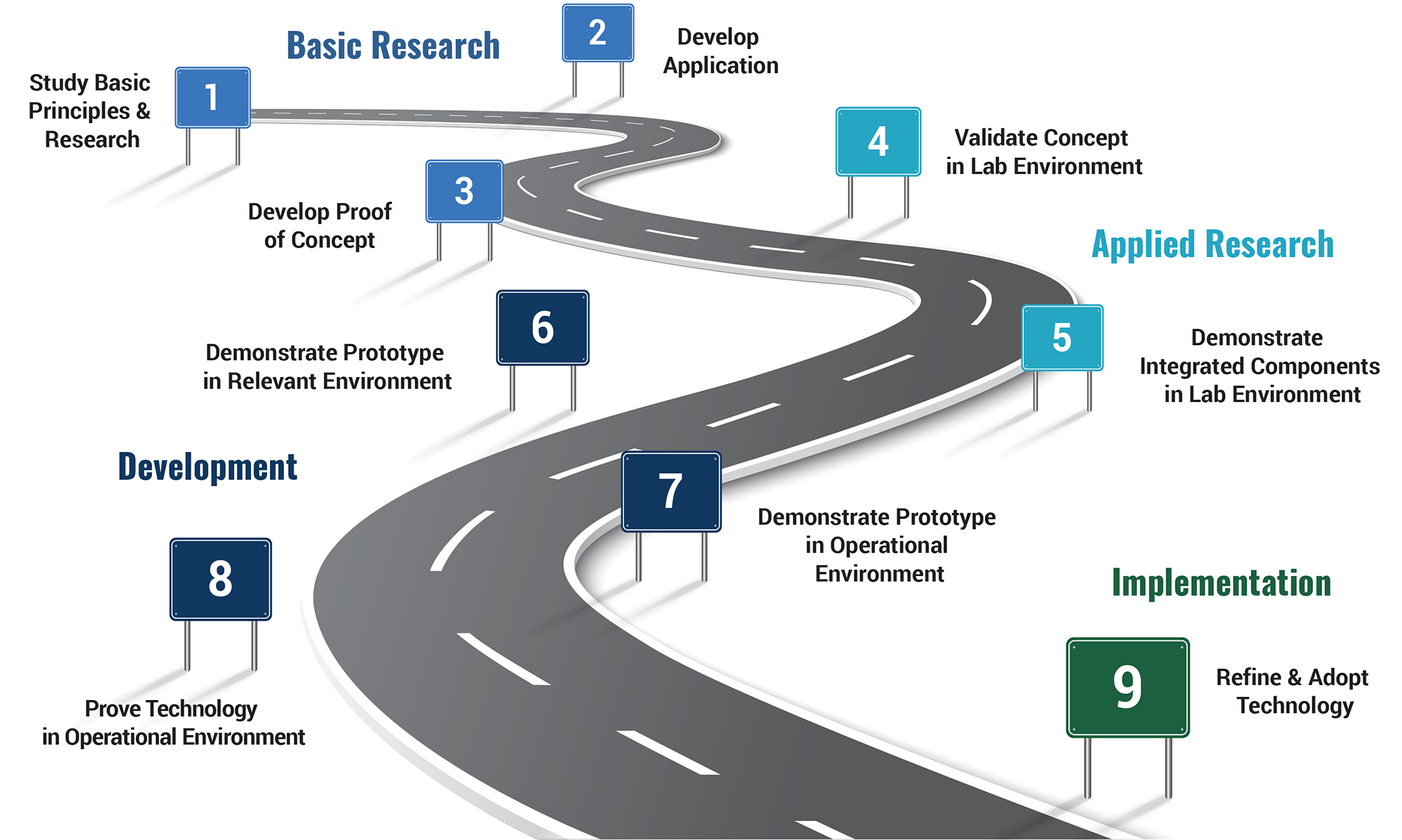Incorporating a new technology into how the transportation community conducts business is a
multifaceted challenge. “Incorporating innovation can be disruptive,” said Thomas Harman, director of the Federal Highway Administration Center for Accelerating Innovation (CAI). “Bringing innovations from research to practice takes champions and an understanding of the complexity of the transportation market.”

At a Transportation Research Board annual meeting session in January, speakers discussed how to evaluate innovations worth pursuing and move them from research into the field. FHWA Chief Innovation Officer Tony Furst said the process begins by answering key questions: “Does the research address an identified need? Has the research advanced enough to work in the field? Do we have the means to make it readily available? Can the workforce absorb the innovation into how it does business?”
Innovations move along a pathway from initial concept to widespread use. FHWA uses the technology readiness level (TRL) scale, created by the National Aeronautics and Space Administration, to describe the nine steps an innovation undergoes from concept to deployable resource. “This tool ensures we are advancing innovations that actually have legs,” said Jeffrey Zaharewicz, CAI senior advisor. “It provides a basis for navigating the often-confusing progression research to practice takes.”
 Technology readiness levels define the path from innovation research to deployment.
Technology readiness levels define the path from innovation research to deployment.The TRL scale provides a way to interpret an innovation’s progress, but it does not quantify the difficulty of advancing the innovation to a higher readiness level, address return on investment, or describe market demand. FHWA’s “TRL Guidebook” explains the TRL assessment process.
Not all research makes it into practice. “As a matter of fact, most does not,” said Harman. “But for innovations that are high value, how do we help them along this TRL pathway?”
The Exploratory Advanced Research Program administered by the FHWA Turner-Fairbank Highway Research Center (TFHRC) focuses on high-risk, high-reward research that bridges the gap between basic and applied research—innovations at TRLs one through five. CAI supports advancement of innovations at higher TRLs through its Accelerating Market Readiness (AMR), State Transportation Innovation Council (STIC) Incentive, Accelerated Innovation Deployment (AID) Demonstration, and Every Day Counts (EDC) programs.
The AMR program advances innovations at a TRL of five or six to seven or higher. AMR innovations are potential game changers that can save lives, accelerate project delivery, and make infrastructure last longer. AMR funding is available to test innovations in real-world settings, document results, and advance them along the TRL pathway. For example, TFHRC developed an in situ scour testing device using AMR funding. Attached to a rig in the field, the erosion head determines soil erodibility, the leading cause of bridge failures.
The STIC Incentive program accelerates implementation of innovations at TRLs seven to nine by offering up to $100,000 per STIC per year to support the cost of standardizing innovative practices. The New Jersey Department of Transportation (NJDOT) used STIC Incentive funds to develop its unmanned aerial system (UAS) program. Now, NJDOT uses UAS to increase accuracy, speed up data collection, and provide access to hard-to-reach locations.
The AID Demonstration program provides up to $1 million to use innovation on a project. FHWA has awarded more than $74 million for 102 projects to use innovations at TRLs seven to nine. In one project, the Missouri Department of Transportation (MoDOT) rehabilitated a bridge with a nanocoating product that forms a passive corrosion protection system. Using the innovation allowed MoDOT to accelerate construction, reduce traffic delays, and provide a longer-lasting coating system on the bridge.
EDC is a State- and local-based program that rapidly deploys proven but underused innovations at TRL nine. EDC has promoted 52 innovations since 2011. Every State has advanced at least 19 EDC innovations, and some have deployed more than 40.
While FHWA and other agencies work to adopt innovations, the transportation workforce needs to develop the skills to deploy those innovations. “The workforce is aging, many are retiring, and the system is not attracting enough new workers,” said Karen Bobo, director of FHWA’s Center for Workforce Development.
Identifying new skills needed to deploy innovations and ensuring that training is available to blend them into existing skills is an ongoing challenge. FHWA is creating partnerships with academia, industry, and government agencies to address this challenge. In one partnership, FHWA collaborated with the American Association of State Highway Transportation Officials, Associated General Contractors, American Road & Transportation Builders Association, and U.S. Department of Labor on best practices, outlined in a playbook, to identify, train, and place highway construction workers.
Research investments create long-term improvements taxpayers can see and stretch limited transportation funds. TRLs help agencies assess innovation readiness, apply for funding, and create a return on investment that benefits the traveling public.
—MORE INFORMATION
To get involved in the STIC network, contact your State STIC or Sara Lowry of CAI.
- Cover
- Public Involvement Communication Tools for a 21st Century Audience
- Unmanned Aerial Systems Take Flight in Highway Transportation
- Innovation Synergy: UAS Videos Enhance Virtual Public Involvement Techniques
- The Pathway to Innovation
- Safety Awards Highlight Every Day Counts Innovations
- States Innovate
- EDC Outtakes: Weather Responsive Management Strategies
- About Innovator
